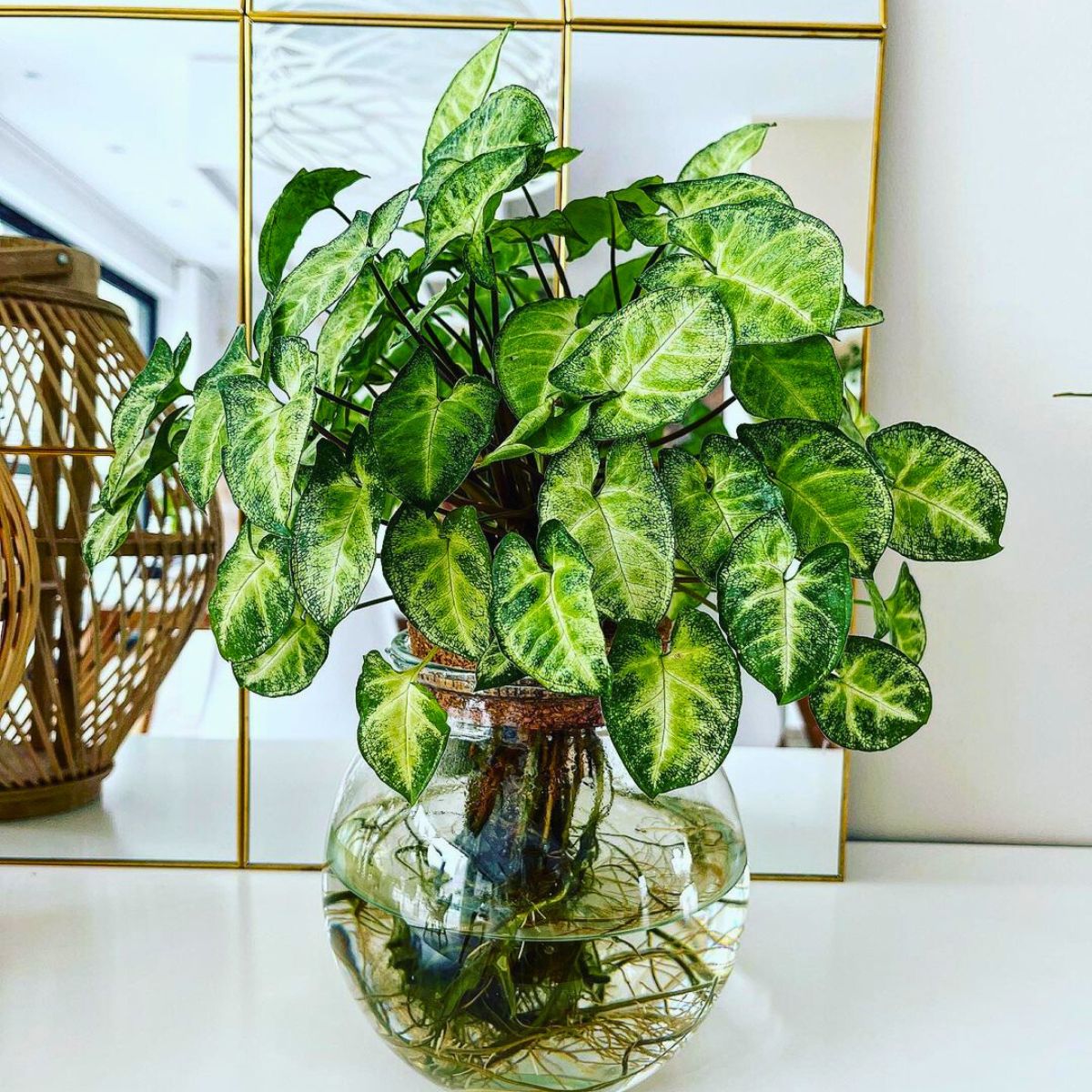The Arrowhead plant: A Comprehensive Guide to Syngonium Podophyllum
The Arrowhead Plant, scientifically known as Syngonium podophyllum, is a popular and versatile houseplant cherished for its attractive foliage and ease of care. Originating from the tropical rainforests of Central and South America, this vining aroid has adapted remarkably well to indoor environments, making it a favorite among both novice and experienced plant enthusiasts. Its adaptability, coupled with its striking leaf shapes and diverse color variations, has cemented its place as a staple in interior design.
The Arrowhead Plant’s appeal lies in its dynamic growth patterns and the captivating changes its leaves undergo as it matures. Young plants exhibit distinctly arrowhead-shaped leaves, hence the common name. As the plant climbs or trails, the leaves transform, becoming more lobed and complex, sometimes resembling the shape of an oak leaf or even a bird’s foot. This morphological transformation, known as heterophylly, adds a layer of intrigue to its cultivation.

Furthermore, the plant’s diverse cultivars offer a spectrum of colors and patterns, ranging from deep green and variegated white to pink, bronze, and even chocolate hues. This variety allows for creative integration into any interior design scheme, from minimalist to bohemian.
Caring for an Arrowhead Plant is relatively straightforward, making it an excellent choice for those new to indoor gardening. However, understanding its basic needs is crucial for ensuring its health and longevity.
Light Requirements

Bright, Indirect Light: The Arrowhead Plant thrives in bright, indirect light. Direct sunlight, especially during the hottest parts of the day, can scorch its leaves.
Watering Needs
Consistent Moisture: Keep the soil consistently moist but not waterlogged. Allow the top inch of soil to dry out before watering again.
Soil and Potting
Well-Draining Soil: Use a well-draining potting mix, such as a blend of peat moss, perlite, and potting soil.
Temperature and Humidity
Temperature Range: Arrowhead Plants prefer temperatures between 60°F and 80°F (15°C and 27°C). Avoid exposing them to temperatures below 50°F (10°C).
Fertilization
Balanced Fertilizer: Feed the plant with a balanced liquid fertilizer diluted to half strength every four to six weeks during the growing season (spring and summer).
Pruning and Training
Pruning: Prune the plant to maintain its shape and encourage bushier growth. Remove any yellowing or damaged leaves.
Propagating Arrowhead Plants is a simple and rewarding process, allowing you to expand your collection or share them with friends.
Stem Cuttings
Selection: Choose a healthy stem with several leaves and nodes.
Division
Repotting Time: Division is best done during repotting.
While Arrowhead Plants are relatively low-maintenance, they can encounter a few common problems.
Pest Infestations
Spider Mites, Mealybugs, and Aphids: These pests can infest Arrowhead Plants.
Root Rot
Cause: Overwatering is the primary cause of root rot.
Yellowing Leaves
Causes: Overwatering, underwatering, nutrient deficiencies, or insufficient light.
Brown Leaf Tips
Causes: Low humidity, dry air, or inconsistent watering.
The popularity of the Arrowhead Plant has led to the development of numerous cultivars, each with unique characteristics.
’White Butterfly’
Appearance: Features bright green leaves with creamy white variegation.
’Pink Syngonium’ (or ‘Neon Robusta’)
Appearance: Exhibits vibrant pink leaves that become more pronounced in bright light.
’Albo Variegata’
Appearance: Distinguished by its intense white and green variegation.
’Bronze Maria Allusion’
Appearance: Features leaves with a bronze or burgundy hue and subtle variegation.
’Red Arrow’
Appearance: exhibits a darker green leaf with a pink or red center vein.
The Arrowhead Plant’s versatility makes it an excellent choice for various interior design styles.
Hanging Baskets
Trailing Growth: Its vining nature makes it ideal for hanging baskets.
Shelves and Mantels
Trailing Foliage: Allow the vines to trail down shelves or mantels for a lush, green look.
Moss Poles and Trellises
Vertical Growth: Train the plant to climb a moss pole or trellis for a dramatic display.
Terrariums and Bottle Gardens
Humidity Lover: Its preference for high humidity makes it suitable for terrariums and bottle gardens.
The Arrowhead Plant, with its captivating foliage, diverse cultivars, and easy-care requirements, remains a beloved houseplant. Whether you are a seasoned plant enthusiast or a beginner, this versatile aroid will undoubtedly bring beauty and a touch of nature to your indoor environment. By understanding its needs and providing proper care, you can enjoy the lush greenery and dynamic growth of this remarkable plant for years to come.
